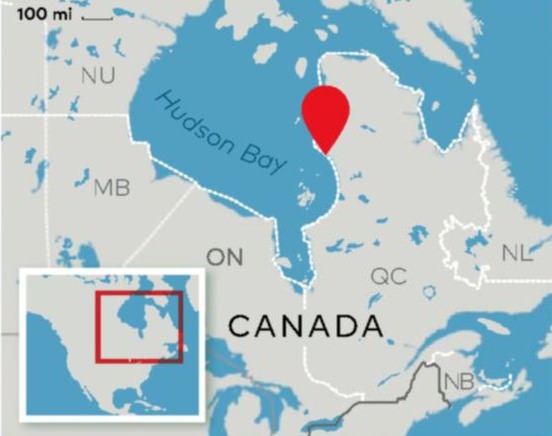Intentar ORO - Gratis
Where Did It All Begin?
Popular Science
|September - October 2017
A new geological finding stirs questions—and controversy—about where and when earliest life emerged.

The rock is deep rusty red, shot through with gray stripes. It rises above shrubby tundra, part of a hummocky terrain that slopes down to the Hudson Bay in northern Quebec, as it has for a very long time—maybe almost as long as the planet itself. This is a rare spot on Earth, one of a few where rocks this old survive. Plate tectonics and the relentless recycling of crust have repeatedly chewed up our planet’s surface. Only a few zones in deep continental interiors have escaped this fate, in places like Greenland and Western Australia. Scientists who specialize in finding signs of the origins of life make pilgrimages to these primeval sites. Life wrote its first chapters in these rocks. And scientists hope to read them.

Canadian geologist Dominic Papineau schemed for years to visit this lonely place, known as the Nuvvuagittuq Supracrustal Belt. In 2008, he finally rounded up a couple thousand dollars in funding and set out from the Carnegie Institution for Science in Washington, D.C., journeying through three layovers and a final leg on a bush plane. If you like rocks—and don’t mind mosquitoes—it’s a great place to ramble for a couple of weeks in the summer. A lichen-flecked stony expanse, polished by glaciers, juts through the thin soil.

Esta historia es de la edición September - October 2017 de Popular Science.
Suscríbete a Magzter GOLD para acceder a miles de historias premium seleccionadas y a más de 9000 revistas y periódicos.
¿Ya eres suscriptor? Iniciar sesión
MÁS HISTORIAS DE Popular Science
Popular Science
They Might Be Giants
A photographer-and-ecologist team are on a mission to document the forests’ mightiest members.
3 mins
Winter 2020
Popular Science
Droplet Stoppers
Covid-19 made face masks a crucial part of every outfit, and we’re likely to don them in the future when we feel ill. Fortunately, there’s a style for every need.
1 min
Winter 2020
Popular Science
Landing a Lifeline
For those whose livelihood depends on the ocean, a covid-spurred interruption in the seafood market might speed progress toward a more sustainable future—for them and for fish.
12 mins
Winter 2020

Popular Science
Headtrip – Your brain on video chat
Dating, Catching up with family, and going to happy hour are best in person.
1 min
Winter 2020

Popular Science
Behind The Cover
Butterflies may seem delicate, but they are surprisingly tough.
1 min
Winter 2020

Popular Science
Tales From the Field – A cold one on mars
Kellie Gerardi, bioastronautics researcher at the International Institute for Austronautical Science
1 min
Winter 2020
Popular Science
The Needs Of The Few
Designing with the marginalized in mind can improve all of out lives.
6 mins
Winter 2020
Popular Science
Life On The Line
On the Western edge of Borneo, a novel conservation-minded health-care model could provide the world with a blueprint to stop next pandemic before it starts.
14 mins
Winter 2020

Popular Science
waste watchers
YOU CAN TURN FOOD SCRAPS INTO FERTILIZER IN ALMOST ANY CONTAINER. THESE BINS USE THEIR OWN METHODS TO ENCOURAGE THE PROCESS, BUT BOTH KEEP BUGS AND STINK AT BAY.
1 min
Winter 2020

Popular Science
why can't i forget how to ride a bike?
LEARNING TO PEDAL IS NO EASY FEAT.
1 min
Winter 2020
Translate
Change font size
